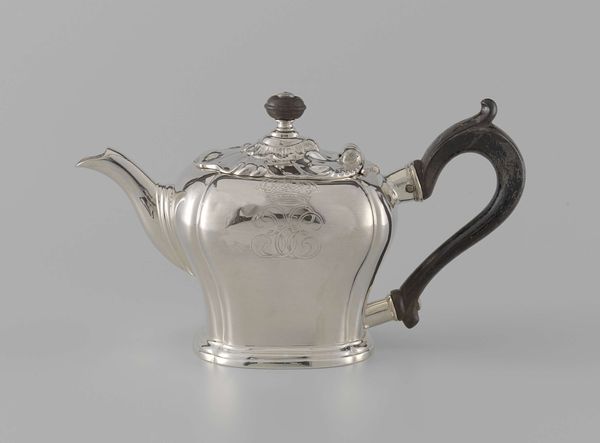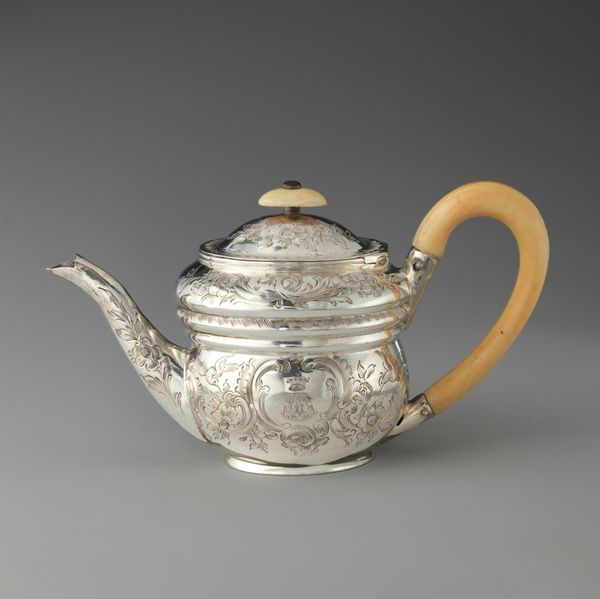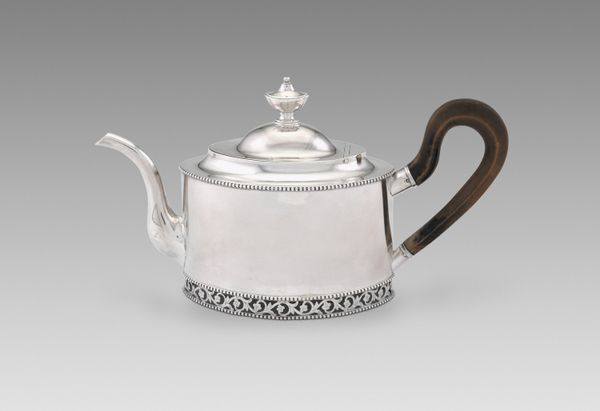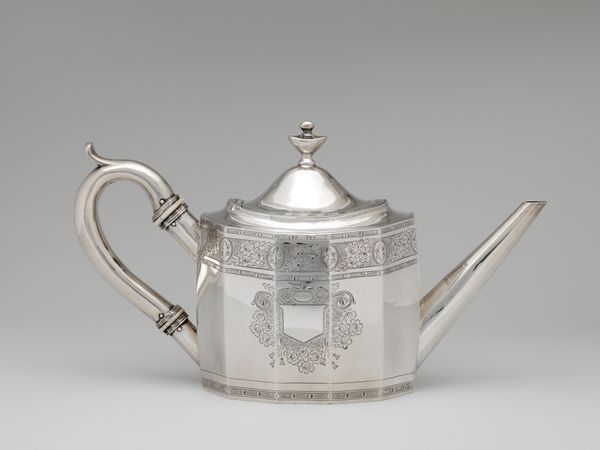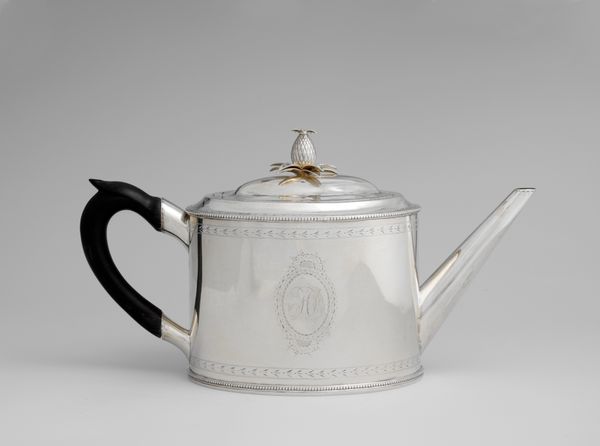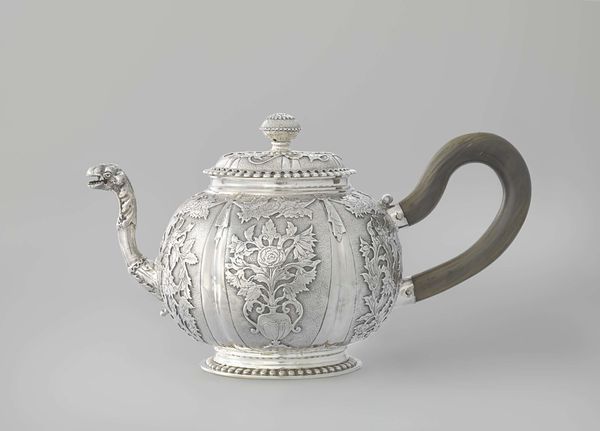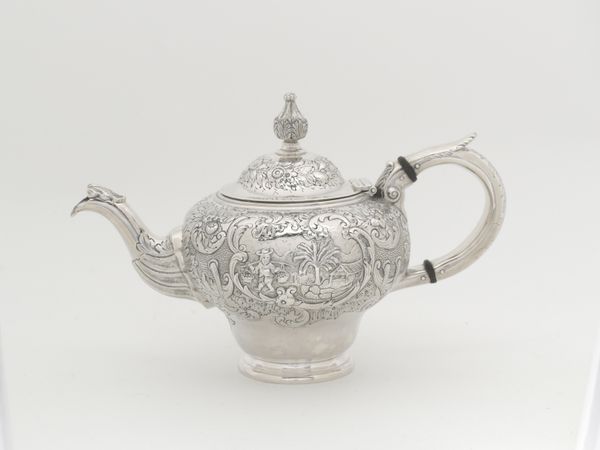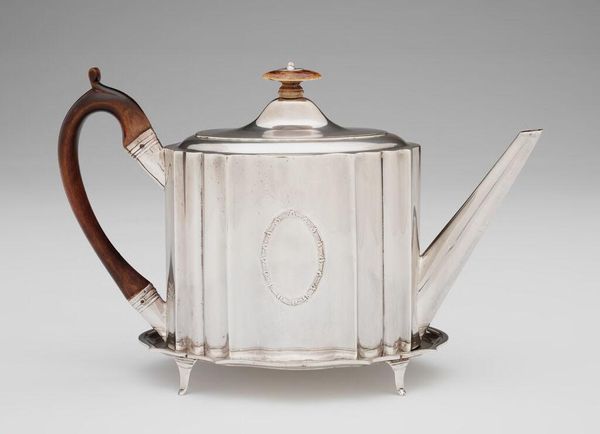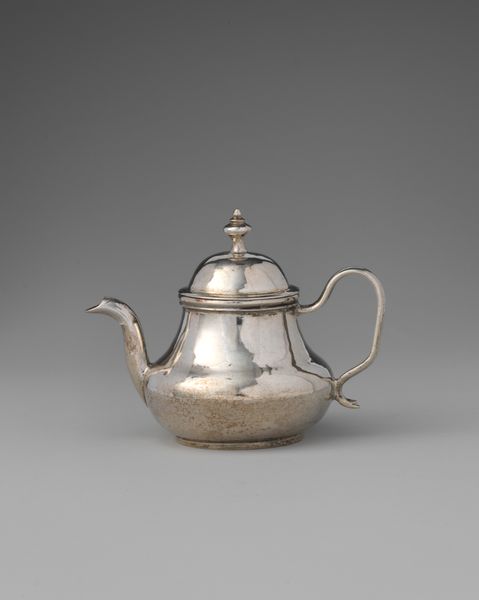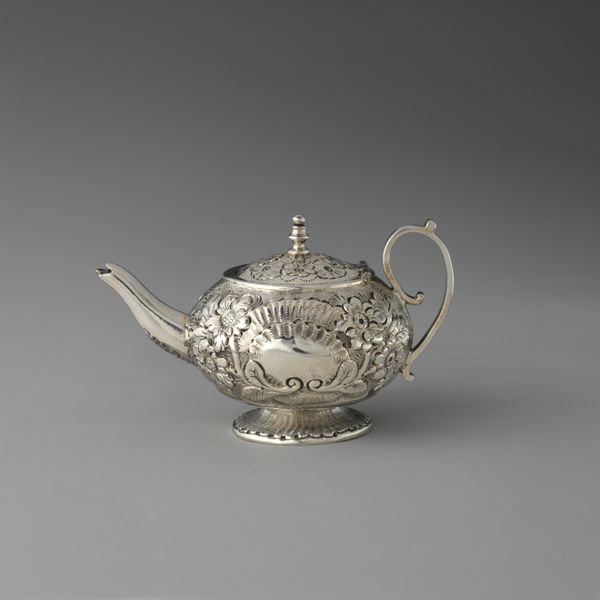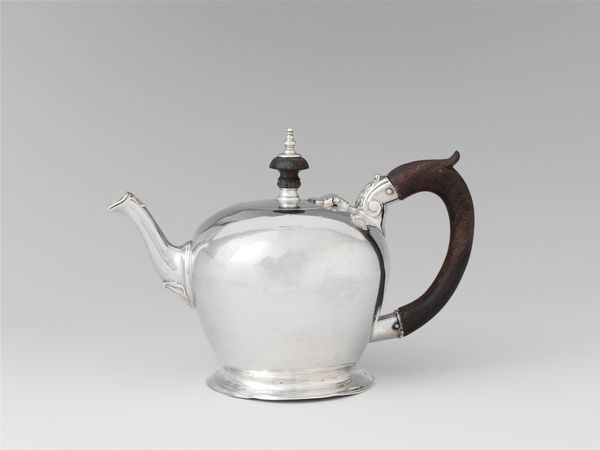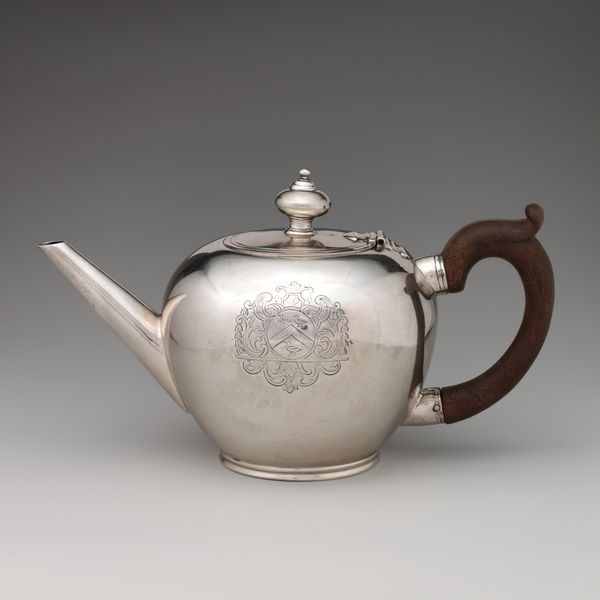
Dimensions: overall: 15.2 × 28.9 × 8.9 cm (6 × 11 3/8 × 3 1/2 in.)
Copyright: National Gallery of Art: CC0 1.0
Editor: This is a silver teapot made by Paul Revere in 1782. The shape is rather angular and striking, especially compared to some of the more ornate teapots I've seen. What catches your eye about this particular piece? Curator: Beyond its functionality, the Revere teapot serves as a potent vessel, holding not just tea but the spirit of a burgeoning nation. Do you see the etched patterns along the fluted sides? Editor: Yes, the repetitive geometric patterns seem quite simple and decorative. Curator: These aren't merely decorative. They whisper of classical motifs favored in a period consciously emulating the virtues of republican Rome. Each line, each curve, echoes the desire for order and civic virtue in a young republic defining itself against monarchical excess. Editor: So, the imagery reinforces the ideals of the time? Curator: Precisely. The teapot becomes a stage for cultural memory, associating the owner with values deemed essential for the new American identity. Imagine the conversations sparked around this object: discussions of independence, governance, and the very future of a nation, all fueled by tea poured from a vessel imbued with symbolic weight. And even the material, the silver itself, spoke of wealth and status in colonial society. Does it change how you see the object? Editor: Absolutely. I wouldn’t have considered all the social and historical significance embedded in something as seemingly simple as a teapot. It is amazing how many meanings can be hidden within an everyday object. Curator: Indeed! By engaging with this single object we touched on colonial aspiration and visual strategy. Next time you drink a cup of tea, imagine the dialogue that simple action shares with our cultural history!
Comments
No comments
Be the first to comment and join the conversation on the ultimate creative platform.
